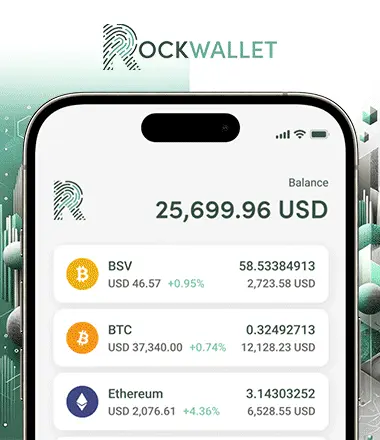Enterprises in various industries can use one of three different blockchain networks to operate specific systems and processes. As an enterprise manager, it is important to know which blockchain network will work for your organization.
Below, we’ll discuss the differences between Private, Public, and Permissioned blockchain networks, and how each one can benefit your business.
Table of Contents
- Private
- Public
- Permissioned
- Blockchain Networks Comparison
- Blockchains for Different Needs
- Blockchain Networks FAQs
- Infographic
Private Blockchain Network
Only a single entity or organization has control over a private blockchain network. Private blockchains only permit verified participants to enter the network. The network operator has the right to override, edit, or delete entries on the network.
With private blockchains, the operator must validate participating parties before they join the network. They must also obtain permission before reading, writing, or editing the blockchain.
Multiple layers of access are in place to keep certain data confidential. The data is private to the network, operator-owned, and not generally available to anyone outside of the network.
Public Blockchain Network
A public blockchain is a permissionless network. Anyone can join and participate in its core activities. Public blockchains are decentralized: nobody can alter the protocols, and no particular participant or single entity controls the data.
Public blockchain ledgers remain permanent, immutable, and secure, providing an unalterable history of transactions. Network operators remain pseudo-anonymous.
Network users cannot modify valid entries on a public blockchain unless a dishonest actor controls more than 51% of the network. Even if this did happen, the modification would be publicly provable and detectable. Thus, the claim of data immutability would still hold.
Permissioned Blockchain Network
A permissioned blockchain has the features of both private and public blockchains. Permissioned blockchains only allow verified participants to perform specific actions. Anyone can join the network after verification of their identity and permission allocation. However, permissioned blockchains limit each user’s actions to their network permissions.
Unlike private blockchains, permissioned network data is normally public. The central permissioning entity only controls participant permissions, without direct authority over the data.
Blockchain Networks Comparison
The following explains how public, private, and permissioned blockchains affect each business application.
Participants
In a public blockchain, anybody can participate on the network. Anyone is free to read, write, or audit the ongoing activities. Moreover, its incentivizing scheme fuels the democratized nature and authority-free operation, encouraging new participants to join and keep the network active.
In a private blockchain, only verified participants can join the network. Network operators grant validation to each user, or the network is subject to a set of locked rules or protocols.
In the case of a permissioned blockchain, participants need to be verified first before they can participate. The exclusive permissions give them the ability to perform specified activities on the network. This protects the integrity of some data.
Identity Management
Private and permissioned blockchains have identity management tools that allow users to plug in their own identity management solutions.
With the blockchain’s identity management capability, individuals and businesses can store their identity data on their devices, choosing which information to share with validators. In this setup, the participant may use a third-party tool to protect confidential information, like a password manager app, a digital bank vault, or an authentication protocol.
Public blockchains, by design, do not have built-in identity management capabilities. Users self-register and have full responsibility for safeguarding their private keys. This does not preclude leveraging 3rd party identity management systems on top of public blockchains.
Network Latency
Network latency differs between the three types of blockchain.
Private networks require identified participants. Because they are smaller, private network nodes receive information at a faster rate. Node operators have fuller control over the network due to interconnectivity.
Public networks operate on a larger scale and have an unlimited number of participants. Therefore, it may take longer for information to travel across all nodes. However, in practice, a core group of well connected nodes tends to form in public blockchains based on proof-of-work, due to its consensus mechanism which penalizes latency between block producers.
Permissioned networks almost have the same framework as a private network because they are small and require identified participants. Therefore, network data transmits over a shorter distance at a faster rate.
Analytics
Blockchain analytics generate a graphical view of the transaction trends and patterns within the network. They can provide real-time alerts on high-risk activities, allowing compliance teams to focus on the most urgent cases. Enterprises can use this information to track what individuals are buying, what products are the most popular, and can use the data to come up with business insights and forecasts.
Account-based systems within public blockchains enable easy use of traditional graph analysis tools. However, one must be careful when determining internal transactions from peer-to-peer transactions so that all relationships (such as token buy and sell) between addresses will properly reflect on the graph.
Public blockchain analytics can reveal more useful information because of the number of variety of different transactions. The smaller size of private and permissioned blockchains limits the number of potential analytical insights.
Businesses can likewise benefit from applications designed for private and permissioned ledgers. By combining the “on” and “off” ledger data stores, they can generate better analytics. They can also share the machine learning- or artificial intelligence-based outputs from their enterprise systems on the ledger for comprehensive and more conclusive analytics data.
It is important to note that analytics can be applied to any blockchain network. The only real difference is how easy it is to obtain the analytics on one chain vs. another. Private and permissioned blockchains have smaller networks which would be easier to analyze compared to a public blockchain with a larger number of players you have to identify and analyze..
Regulations
Regulatory frameworks are still evolving, but for now, it seems unlikely that public blockchains will get a nod from enterprises due to privacy and other compliance issues.
Private and permissioned blockchains have a better chance of complying with existing policies (and even with the latest standards and guidelines) since they offer more applications built in line with a business’s existing structure.
Blockchain Network Comparison Table
The following table summarizes and compares the benefits public, private, and permissioned blockchains offer business enterprises.
| Category | Private | Public | Permissioned |
|---|---|---|---|
| Participants | Only selected participants can join the blockchain network. | Anyone can access, view and record to the data ledger. | Anyone can join after verification of their identity and allocation of select permissions. Users can only perform certain activities. |
| Identity Management | Private ledgers have identity management tools that allow users to plug in identity management solutions. | By design, public blockchains do not have identity management capabilities build into them. | Permissioned ledgers have a modular architecture that enables identity management tools. |
| Network Latency | The speed at which nodes receive information is often faster in a private network because these networks tend to be smaller, every participant is known, and node operators tend to be more interconnected in these systems. | Because a public network is larger and can have an unlimited number of participants, it may take longer for information to travel to every node operating within the network. But in practice due to the economic efficiency incentives of nodes, they tend to be highly connected, and latency doesn’t differ that much from that of a permissioned blockchain. | Similar to a private network, information in a permissioned network travels quickly because the network is small and every participant has already been identified; therefore, the data being transmitted travels a shorter distance at a faster rate. |
| Analytics | Obtaining analytics is a faster process. When you can quickly and easily identify every node on the network, you are able to aggregate data at a faster rate. | Obtaining analytics can quickly be done once you have identified each of the nodes on the network; however, because a public blockchain is often larger than both a private and permissioned chain, it typically takes longer to identify each of the network’s nodes. | Similar to a private chain, you can obtain analytics quickly since you are working in a closed network in which all of the participating nodes have already been identified and approved. |
| Regulations | The rules that govern a private blockchain can easily be changed and updated at any time to be compliant with existing data policies. | A majority of public blockchains are compliant with existing data policies, laws, and regulations. However, it typically takes longer to make compliance changes on a public network. | Permissioned blockchains offer the flexibility of private blockchains, while taking less time for compliance changes than a public network with its smaller number of verified participants. |
Different Blockchains for Different Needs
Private blockchain, public blockchain, and permissioned blockchain have specific uses for different industries. Each type has its advantages and disadvantages. When deciding which one to use, you must carefully factor in the needs and requirements of your enterprise.
If you want to know more about blockchain and Bitcoin, CoinGeek is the perfect place for beginners.
Blockchain Networks FAQs
Only a single entity or organization has control over a private blockchain network. Private blockchains only permit verified participants to enter the network. The network operator has the right to override, edit, or delete entries on the network.
A public blockchain is a permissionless network. Anyone can join and participate in its core activities. Public blockchains are decentralized: nobody can alter the protocols, and no particular participant or single entity controls the data.
A permissioned blockchain has the features of both private and public blockchains. Permissioned blockchains only allow verified participants to perform specific actions. Anyone can join the network after verification of their identity and permission allocation. However, permissioned blockchains limit each user’s actions to their network permissions.
In a private blockchain, only verified participants can join the network. Network operators grant validation to each user, or the network is subject to a set of locked rules or protocols.
Public blockchains, by design, do not have built-in identity management capabilities. Users self-register and have full responsibility for safeguarding their private keys. This does not preclude leveraging 3rd party identity management systems on top of public blockchains.
Private and permissioned blockchain networks, in general, operate much faster than public blockchains, which have a higher number of participants, nodes, and transactions.
Any private, public, or permissioned blockchain can provide useful analytical insights. However, public blockchains generally offer the most data because of the sheer volume of participants and variety of transactions.
Blockchain Networks Infographic
Covering the blockchain basics, the infographic below will provide a comparative guide to the nature of private vs. public vs. permissioned blockchains, touching on their differences in terms of participants, network, application, and performance.


 07-14-2025
07-14-2025 



